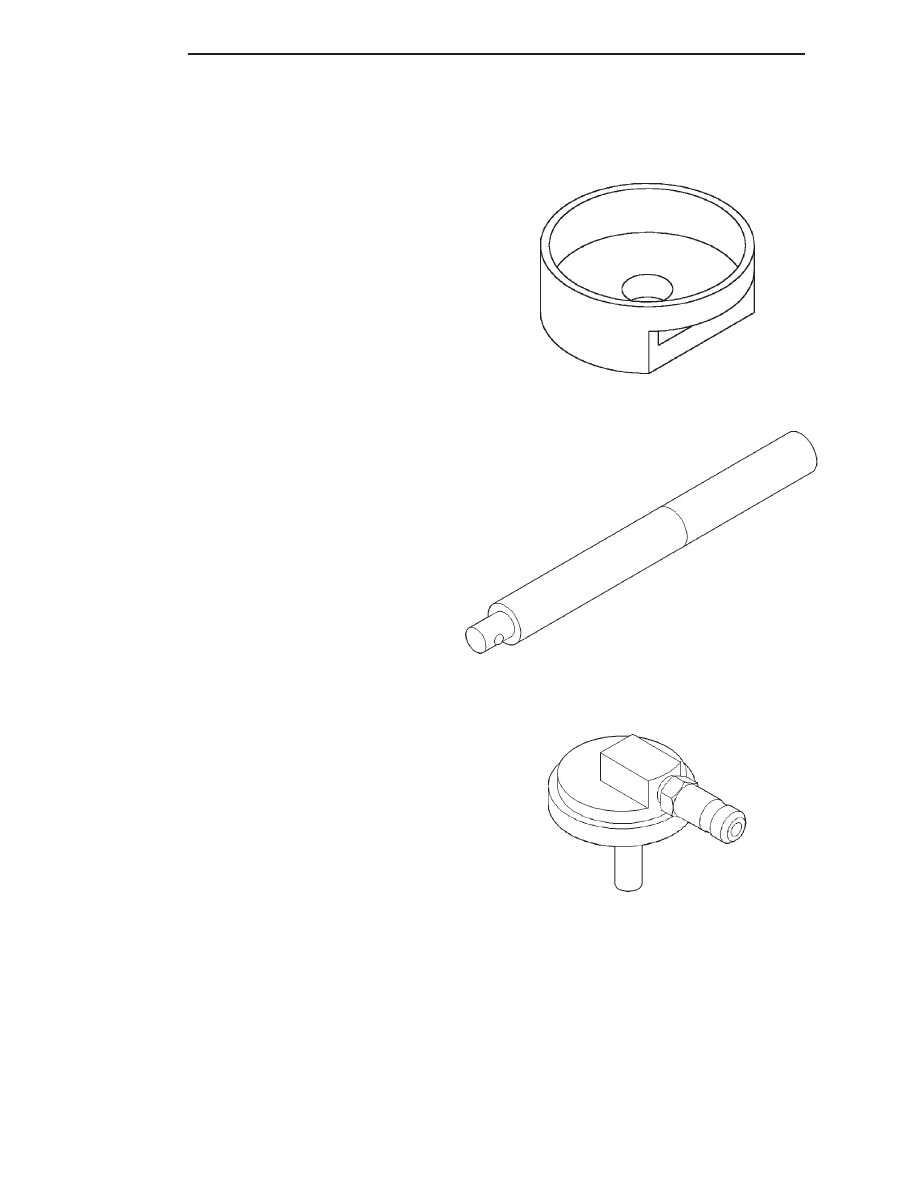Jeep XJ. Manual - part 54

only Mopar brake fluid or an equivalent from a
tightly sealed container.
CAUTION: Never use reclaimed brake fluid or fluid
from an container which has been left open. An
open container will absorb moisture from the air
and contaminate the fluid.
CAUTION: Never use any type of a petroleum-
based fluid in the brake hydraulic system. Use of
such type fluids will result in seal damage of the
vehicle brake hydraulic system causing a failure of
the vehicle brake system. Petroleum based fluids
would be items such as engine oil, transmission
fluid, power steering fluid, etc.
BRAKE COMPONENTS
Disc Brake Caliper
Type . . . . . . . . . . . . . . . . . . . . . . . . . . . . . Sliding
Disc Brake Rotor
Type . . . . . . . . . . . . . . . . . . . . . . . . . . Ventilated
Max. Runout . . . . . . . . . . . . . 0.12 mm (0.005 in.)
Max. Thickness Variation . . 0.013 mm (0.0005 in.)
Min. Thickness . . . . . . . . . . 22.7 mm (0.8937 in.)
Brake Drum
Size . . . . . . . . . . . . . . . . . . . . . . . . 9 in. or 10 in.
Brake Booster
Type . . . . . . . . . . . . . . . . . . . . . Dual Diaphragm
TORQUE CHART
DESCRIPTION
TORQUE
Brake Pedal
Pivot Bolt/Nut . . . . . . . . . . . . 35 N·m (26 ft. lbs.)
Brake Booster
Mounting Nuts . . . . . . . . . . . 39 N·m (29 ft. lbs.)
Master Cylinder
Mounting Nuts . . . . . . . . . 17.5 N·m (155 in. lbs.)
Brake Lines . . . . . . . . . . . . . 14 N·m (124 in. lbs.)
Combination Valve
Mounting Nuts . . . . . . . . . 17.5 N·m (155 in. lbs.)
Brake Lines . . . . . . . . . . . . . 14 N·m (124 in. lbs.)
Caliper
Mounting Bolts . . . . . . . . . . . 15 N·m (11 ft. lbs.)
Brake Hose Bolt . . . . . . . . . . . 31 N·m (23 ft. lbs.)
Wheel Cylinder
Mounting Bolts . . . . . . . . . . . . 10 N·m (7 ft. lbs.)
Brake Line . . . . . . . . . . . . . 14 N·m (124 in. lbs.)
Parking Brake
Lever Screws . . . . . . . . . 10-14 N·m (7-10 ft. lbs.)
Lever Bracket Screws . . 10-14 N·m (7-10 ft. lbs.)
Cable Retainer Nut . . . . . . . 1.5 N·m (14 in. lbs.)
SPECIAL TOOLS
BASE BRAKES
Installer Caliper Dust Boot 8280
Handle C-4171
Adapter Pressure Bleeder 6921
5 - 32
BRAKES
XJ
SPECIFICATIONS (Continued)